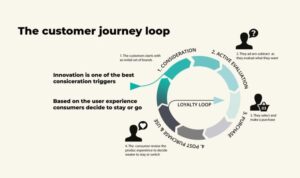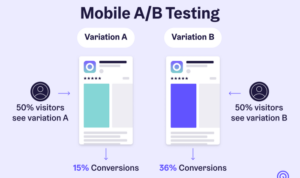Creating Effective Sales Emails takes center stage in the world of marketing, where crafting captivating content and visually appealing designs are key. Get ready to dive into the art of email persuasion and creativity!
Elements of Effective Sales Emails: Creating Effective Sales Emails
Effective sales emails are crucial tools for connecting with potential customers and driving conversions. Key components that make up an effective sales email include a catchy subject line, personalized content, and a clear call-to-action (CTA).
Importance of a Catchy Subject Line, Creating Effective Sales Emails
A catchy subject line is the first thing a recipient sees and can determine whether they open the email or not. It should be attention-grabbing, concise, and relevant to the content of the email. For example, a subject line like “Don’t miss out on our exclusive offer!” is more likely to entice recipients to open the email compared to a generic subject line.
Role of Personalization
Personalization in sales emails involves addressing the recipient by their name, tailoring content based on their preferences or past interactions, and making the email feel more human and less like a generic marketing message. For instance, including specific details about a customer’s previous purchase history can show that the email is tailored to their needs, increasing the chances of a positive response.
Effective Call-to-Action (CTA) Strategies
A clear and compelling call-to-action (CTA) is essential for guiding recipients on what action to take next. Examples of effective CTA strategies include using action-oriented language like “Shop Now,” “Learn More,” or “Get Started,” creating a sense of urgency with limited-time offers, and providing multiple CTA buttons throughout the email to cater to different preferences and goals.
Crafting Compelling Content

When it comes to writing engaging and persuasive sales email content, there are a few key tips to keep in mind. Firstly, make sure to personalize the email to the recipient by addressing them by name and referencing any previous interactions. This shows that you value their individuality and are not just sending out a mass email. Secondly, focus on the benefits of your product or service rather than just listing features. Customers want to know how your offering can solve their problems or make their lives easier. Lastly, keep the email concise and to the point. People are busy, so get your message across quickly and clearly.
Addressing Customer Pain Points
One of the most important aspects of effective sales emails is addressing customer pain points. By identifying and acknowledging the challenges or issues that your potential customers are facing, you can show them that you understand their needs and are offering a solution. This helps to build trust and credibility, making it more likely that they will engage with your email and consider your offering.
Using Storytelling
Storytelling is a powerful tool that can be used to create a connection with the recipient of your sales email. By sharing a relevant and engaging story that illustrates how your product or service has helped others in similar situations, you can draw the reader in and make them more receptive to your message. Stories have a way of resonating with people on an emotional level, making them more memorable and impactful than a simple list of facts or statistics.
Successful Email Templates
There are various types of sales emails, each requiring a slightly different approach. For example, a cold email to a new prospect should focus on introducing yourself and your offering in a compelling way. On the other hand, a follow-up email to a lead who has expressed interest should provide more detailed information and address any specific questions or concerns they may have. Below are examples of successful email templates for different types of sales emails:
- Subject: Unlock Your Business Potential with Our Innovative Solution
“Hi [Recipient’s Name],
I hope this email finds you well. I wanted to reach out and introduce our cutting-edge software solution that has helped businesses like yours increase efficiency and drive growth. Would you be open to a quick call to discuss how we can support your goals?
Looking forward to hearing from you.
Best, [Your Name]” - Subject: Follow-Up on Your Recent Inquiry
“Hi [Recipient’s Name],
I wanted to follow up on your recent inquiry about our services. I’m here to provide any additional information you may need and answer any questions you have. Let me know the best time for a call or meeting.
Thanks for considering us.
Regards, [Your Name]”
Design and Layout
When it comes to sales emails, the design and layout play a crucial role in determining the effectiveness of your message. A well-thought-out design can capture the recipient’s attention, guide them through the content, and ultimately lead to conversions.
Importance of Mobile Responsiveness
Ensuring that your sales email is mobile-responsive is key in today’s digital landscape. With more and more people checking their emails on smartphones and tablets, having a design that adapts to different screen sizes is essential to reach your audience effectively.
- Use a single-column layout to make it easier to read on mobile devices.
- Avoid using small font sizes that may be difficult to read on smaller screens.
- Optimize images for mobile viewing to ensure fast loading times.
Best Practices for Formatting Text, Images, and CTA Buttons
- Keep text concise and to the point, using short paragraphs and bullet points for easy readability.
- Use high-quality images that are relevant to your message and enhance visual appeal.
- Place the Call-to-Action (CTA) button prominently in the email, with clear and actionable language.
Examples of Visually Appealing Designs
One example of a visually appealing sales email design is a clean and minimalist layout with a bold CTA button that stands out. Another example could be a personalized email with dynamic content that changes based on the recipient’s behavior or preferences.
A/B Testing and Optimization

A/B testing in the context of sales emails involves sending two different versions of an email to a sample of your audience to see which one performs better in terms of open rates, click-through rates, and conversions. This allows you to optimize your email content and design based on data-driven insights.
Strategies for Conducting A/B Tests
- Test one element at a time: Whether it’s the subject line, call to action, or design, focus on testing one variable to accurately measure its impact.
- Split your audience evenly: Make sure your A and B groups are of equal size to ensure statistical significance in your results.
- Set clear goals: Define what success looks like for each test to effectively measure performance.
- Use A/B testing tools: Utilize email marketing platforms that offer A/B testing features to streamline the process.
Analyzing and Interpreting A/B Test Results
- Look at key metrics: Analyze open rates, click-through rates, and conversion rates to determine the winning variation.
- Consider statistical significance: Ensure that the results are not due to chance by looking at the confidence level of the data.
- Iterate based on insights: Use the learnings from A/B tests to continuously optimize your sales emails for better performance.
Examples of Successful A/B Test Variations
Subject Line: Test of a personalized subject line vs. a generic one resulted in a 15% increase in open rates for the personalized version.
Call to Action: Changing the color and placement of the call to action button led to a 20% higher click-through rate.
Content Length: Testing long-form content vs. short-form content showed a 10% higher conversion rate for the shorter version.





